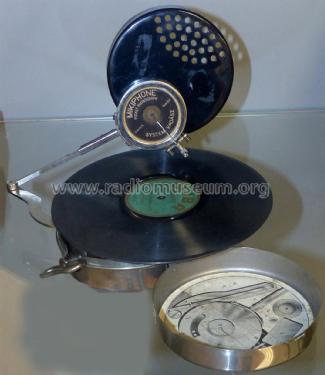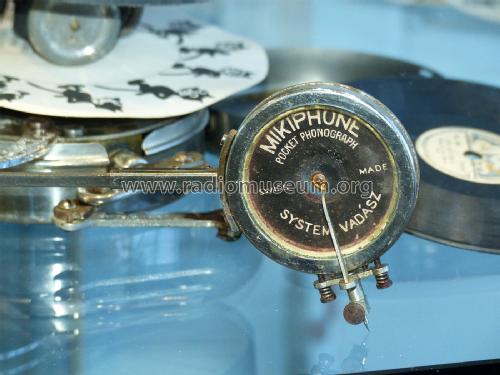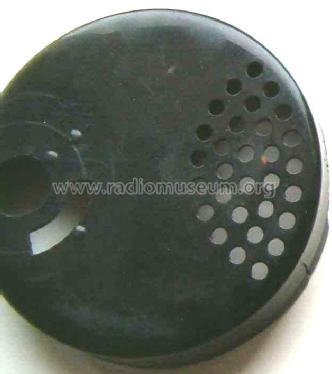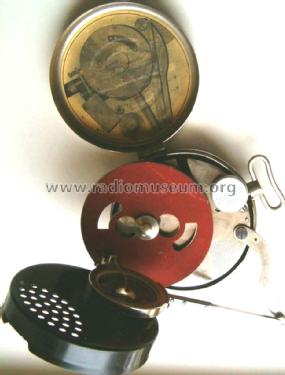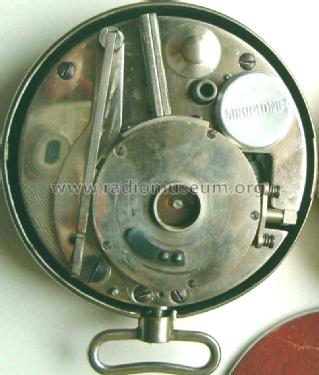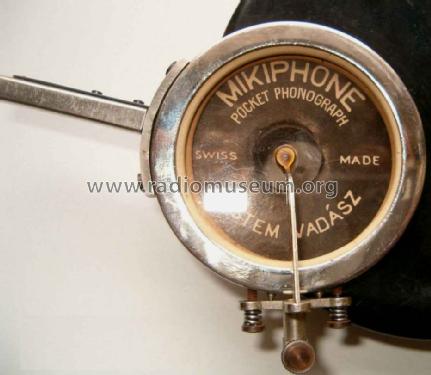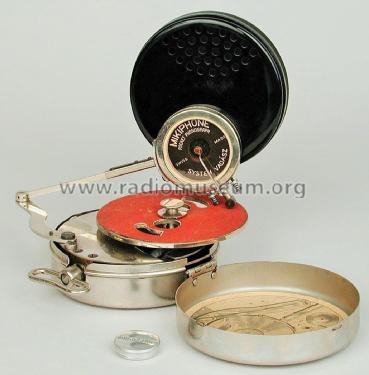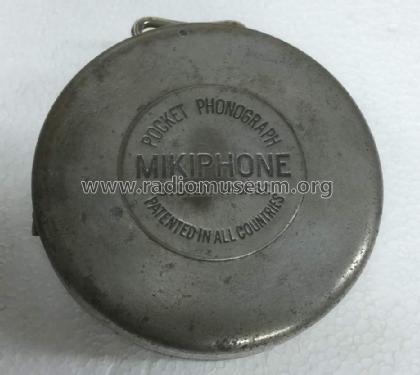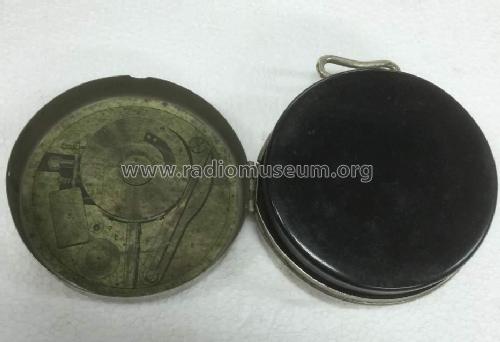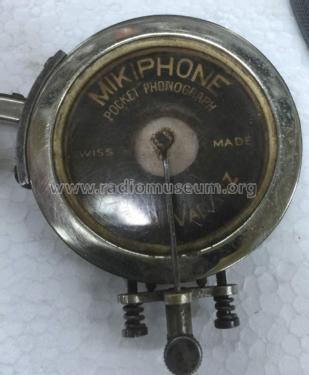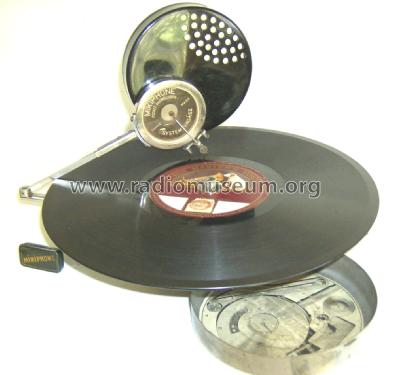Mikiphone Pocket Phonograph "Vadász" System
Mikiphone S.A., Vadász; Lausanne
- Hersteller / Marke
- Mikiphone S.A., Vadász; Lausanne
- Jahr
- 1926/1927
- Kategorie
- Grammophon/Phonograph mechanisch
- Radiomuseum.org ID
- 213505
- Wellenbereiche
- - ohne
- Spezialitäten
- Plattenspieler (kein -Wechsler)
- Betriebsart / Volt
- Solar- und/oder Muskelenergie und evtl. ext. Power
- Lautsprecher
- Trichter
- Material
- Metallausführung
- von Radiomuseum.org
- Modell: Mikiphone Pocket Phonograph "Vadász" System - Mikiphone S.A., Vadász;
- Form
- Kleines Reisegerät oder «Taschengerät» < 20 cm.
- Abmessungen (BHT)
- 110 x 45 x 110 mm / 4.3 x 1.8 x 4.3 inch
- Bemerkung
-
Das Mikiphone ist das kleinste funktionsfähige Taschengrammophon der Welt. Das Gerät konnte zum Transport komplett zerlegt und alle Teile durch eine raffinierte Platzgestaltung in der runden Blechdose von nur 11 cm Durchmesser verstaut werden. In zusammengeklapptem Zustand lässt rein äußerlich nichts darauf schließen, dass es sich hierbei um ein Grammophon handelt. Neben Pocket-Schallplatten konnten auf dem Gerät auch normale Schellackplatten mit einem Durchmesser von bis zu 25 cm abgespielt werden.
Der Antrieb ist ein Miniatur-Einfach-Federwerk mit Fliehkraftregelung, die Schalldose ist mit Glimmermembran ausgeführt. Das Gehäuse ist aus Stahlblech.
Herstellung durch Paillard.
According to a product folder, the Mikiphone was introduced by the French company Innovation in 1926, after two years of research. Mikiphone is the world's smallest portable pocket gramophone. It was produced by Paillard.
In the small nickel plated metal housing all necessary components are stored: a Swiss-made motor that can play a 10" record with one winding, platter, tonearm, sound box with mica diaphragm, and a special sound amplifier made of celluloid.
After 1927, remaining stock was given away as prizes in contests or sold for reduced prices (at least in France).
Retail prices in 1926:
- UK: £2. 15s.-
- France: 295 francs
- Hungary: 720000 korona
Some Mikiphones have been silver or gold plated, but we don't have any information about the originality of such plating.
For further information please consult the manufacturer page.
- Nettogewicht
- 1.3 kg / 2 lb 13.8 oz (2.863 lb)
- Datenherkunft
- - - Manufacturers Literature
- Literaturnachweis
- L'Illustration (20.02.1926)
- Literatur/Schema (1)
- -- Original prospect or advert (La Dépêche (Toulouse), 07.05.1927)
- Literatur/Schema (2)
- -- Original prospect or advert (Mikiphone Flyer)
- Autor
- Modellseite von einem Mitglied aus A angelegt. Siehe bei "Änderungsvorschlag" für weitere Mitarbeit.
- Weitere Modelle
-
Hier finden Sie 1 Modelle, davon 1 mit Bildern und 0 mit Schaltbildern.
Alle gelisteten Radios usw. von Mikiphone S.A., Vadász; Lausanne
Sammlungen
Das Modell Mikiphone Pocket Phonograph "Vadász" System befindet sich in den Sammlungen folgender Mitglieder.
Museen
Das Modell Mikiphone Pocket Phonograph "Vadász" System ist in den folgenden Museen zu sehen.
Forumsbeiträge zum Modell: Mikiphone S.A.,: Mikiphone Pocket Phonograph "Vadász" System
Threads: 1 | Posts: 2
Hi All!
It is advisable to indicate who invented a product, not with the manufacturer's information, but with the product itself.
"The brothers Étienne and Nicolas Vadaz (Swiss residents of Hungarian origin) developed the Mikiphone in around 1923. It is the world's smallest portable phonograph."
Br,
STS
Sándor Selyem-Tóth, 22.Aug.23

